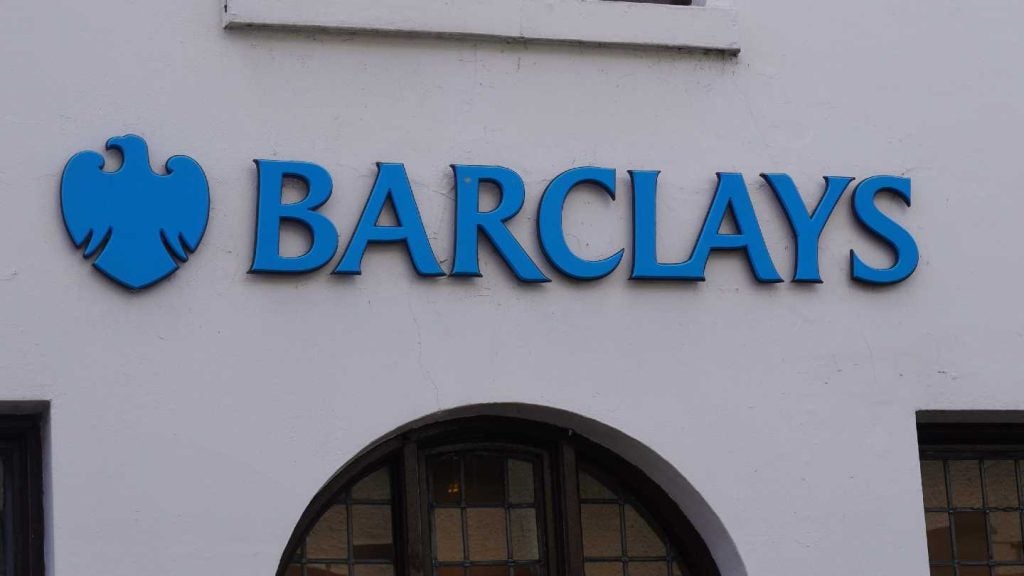
As 2019 comes to an end, private banks, asset managers and HNWIs are wondering what the next year will hold in store for clients and investments. Patrick Brusnahan asks experts in the sector about what they expect in the future of private banking and across 2020.
Stéphane Monier, Lombard Odier
This year offered investors sound returns. For 2020, economic data increasingly suggests that the worst of the economic slowdown may be behind us. Still, we remain in a low-yield, low-growth environment, delivering returns in the low single digits supported by accommodative central bankers.

Access deeper industry intelligence
Experience unmatched clarity with a single platform that combines unique data, AI, and human expertise.
Resilient portfolio construction is key to every investor’s peace of mind. We have summarised 10 convictions to position a portfolio for the year ahead.
Again, much attention will focus on US politics. Americans elect a president in 2020, and if investors have learned anything in recent years, it is that one man can throw many spanners into political machinery. Ironically then, given the Trump-inspired turmoil of the past three years, markets now are most worried by suggestions that he may be succeeded by Democrat Elizabeth Warren.
Trade is the single issue that has coloured the entire investment landscape. Much hinges on whether, in the final weeks of 2019, negotiations can hint at scrapping tariffs next year. If China and the US cannot settle their dispute before the US presidential elections, and if Trump sidesteps impeachment and then were re-elected, he may even escalate tensions. Markets will react to every development.
The past year was notable for its political unrest. From France, the UK and Iran to Hong Kong, Venezuela and Chile, there is increasing dissatisfaction with political systems and their abilities to manage change. For a range of seemingly unrelated reasons – whether the cost of living, fuel prices, political or climate change – widespread unrest points to easily shared disillusion through social media platforms.

US Tariffs are shifting - will you react or anticipate?
Don’t let policy changes catch you off guard. Stay proactive with real-time data and expert analysis.
By GlobalDataSome of this also looks like a direct result of frustrations with rising inequalities. It is hard to ignore the role of unconventional monetary policy in exacerbating inequalities since the financial crisis. Over the last decade, central banks have helped to stimulate economies and support job growth. However, that also inflated asset prices, with few of the benefits trickling down into real economies. Investors need to follow closely these profound changes in social structures.
Looking ahead to monetary and fiscal policy, Christine Lagarde has just succeeded Mario Draghi at the European Central Bank, and Trump is likely to continue his criticisms of Jerome Powell and the Federal Reserve while pushing two Republican nominees to the board’s vacant seats.
Germany may shake off its aversion to debt with a fiscal package that would boost the eurozone’s fortunes, and China may provide more support to cushion its job market from a slowing economy.
As we prepare for the challenges ahead, it is our pleasure to wish you all a healthy, happy and prosperous 2020.
- Stay diversified and nimble
Investors must pay particular attention to managing a well-diversified and resilient portfolio as we move into 2020. The inevitable surprises will challenge allocations. This means investors must be clear about how they build their exposures, and keep appropriate levels of cash to remain flexible, while keeping their convictions top of mind. - Shield portfolios
To defend a portfolio’s gains, investors should look at the Japanese yen and put options as well as gold. We prefer the yen to the Swiss franc, as the franc has shown weaker correlations to global risk since 2015.
Spreads on equity indices are a relatively attractive way of hedging a portfolio from a sharp market decline. Finally, if tactically managed, gold can still play a role as a portfolio diversifier, hedging against inflation and volatility – and market fears. - Identify yield through carry strategies
Traditional fixed income’s low returns now demand a more active approach. Carry strategies, in particular in the high-yield segment, should perform well in this low-yield, moderate-volatility environment.
We also remain overweight in emerging market hard currencies and expect spreads to stay stable. EM growth should improve and China is already showing signs of stabilisation. Credit fundamentals are sound as companies have been conservative in recent years and so globally, EM net leverage is decreasing. Investors should focus on strong credit metrics when picking companies and look at the crossover (BBB/BB) segment.
We prefer to move down the capital structure – into subordinated bonds and hybrids, for example – in fundamentally solid companies, rather than compromising on credit quality. We also like Corporate Sector Purchase Programme-eligible issuers and their substitutes across currencies. - Focus on equity quality
Pockets of equity quality and growth remain. We expect equities to post positive returns in 2020 with a potential for further market gains if, as seems possible, trade talks progress. Third-quarter results beat low expectations and earnings growth remains weak.
So, although not particularly attractive from a risk-return perspective, guidance for next year is holding up, and valuations should stay supported by accommodative central bank policies. With lower liquidity in global small caps, we prefer larger names in value and growth stocks. - Equity sectors
With signs that manufacturing is bottoming out, investors should keep an eye on industrial names and balance exposure between defensive and cyclical sectors. The rotation in sector leadership should continue, underlining the importance of this approach.
Specifically, we continue to add to the healthcare and energy sectors, and we remain overweight in information technology. However, with currently high cash levels and risk arbitrage strategies still underinvested, there is a risk that investors will start chasing a rising market in 2020. - EM equities
We are cautiously upbeat on emerging markets for next year. Brazil is our top pick in Latin America: the country is making a macro policy shifts and a recovery should boost earnings growth. There are opportunities more widely in EM equities, including in China, especially if or when the trade dispute moves towards a resolution, and when, as we expect, the dollar weakens. - Invest in real assets
Valuations in real assets, whether real estate, private equity, private debt or infrastructure, all look high for the moment, but are supported by low interest rates. It does not look that there is a bubble in these alternative asset classes because prices and fundamentals do not seem disconnected.
While high valuations – much like many other asset classes – make them vulnerable to any sudden shift in sentiment or environment, to some extent they remain insulated by their illiquidity. For eligible euro and Swiss franc investors, real estate remains one of the last asset classes to offer a reasonable return with limited volatility. - A weaker dollar
2018’s dollar rally and 2019’s resilience is explained by the interplay of trade tensions, the subsequent slowdown in global growth, and the US’ outperformance compared with the rest of the world, thanks mostly to fiscal stimulus.
However, now that data suggests that the global economy is bottoming out and there are early signs of a trade solution, the tail risks are dissipating. This is likely to set the stage for a weaker dollar in 2020. We anticipate EURUSD at 1.15 and USDCHF at 0.97 in the last quarter of 2020. - Sterling to capitalise on Brexit developments
We expect the Conservatives to win a parliamentary majority in the 12 December general elections, which should allow them to ratify the Withdrawal Agreement and pave the way for trade talks. This would support an undervalued sterling and should price out what is left of the no-deal Brexit premium. We expect GBPUSD to hit 1.35 in Q4 2020. - EM currencies poised for some upside
Emerging currencies continued to depreciate in 2019, hurt by slowing global trade. A stabilisation in trade, delayed impact from modest Chinese stimulus and significant EM policy easing should encourage an EM growth recovery and support their currencies.
While there is plenty of variation, on the whole, EM currencies look undervalued. Our central scenario points to a 3-4% spot return in JPMorgan’s Emerging Market Currency Index. We favour the Russian rouble, Malaysian ringgit, Peruvian sol and Mexican peso: they are all undervalued, show sound external balances and will likely benefit from idiosyncratic drivers in 2020.
Caroline Burkart, Scorpio Partnership
As we look ahead to 2020, what does the landscape for UK wealth firms look like? Here we review the key developments and challenges we are seeing across the industry as we go into next year.
Slowing market growth
Overall growth has slowed. The last year for which there is full data, 2018, shows that year-on-year there was a 6% decrease in UK wealth and 3.3% decrease in the HNWI population, taking the UK HNWI population to 556,160 with assets of $2trn.
Aside from these headline numbers, it is fair to say that the industry – in common with most sectors – is undergoing a constant evolution, as new economic realities become established and new technology develops. However, the industry is taking time to adapt and evolve to keep up with the pace of change.
Investment in technology and compliance
Technology is an area taking up considerable budget as firms adopt new digital platforms across their operations from front to back office.
Investing in new technology is essential to future-proof the business – but is also a challenge at a time when profitability and margins are on a downward trajectory.
For clients, the digital experience is now a key determiner of how they view their provider, and for many HNW clients, our research shows that the digital experience in wealth is still not up to the standard of other industries that clients interact with daily. Wealth managers are clinging to the value of the one-to-one relationship, yet clients want a hybrid approach, where technology augments rather than replaces the relationship.
Firms have also been forced to manage the range of new regulations introduced over the last decade, and they have reported significantly increased budget and people allocations in this area as they adopt and enable new procedures.
Demonstrating better value to clients
Clients are inevitably taking a keener interest in fees and charges, encouraged by new regulations around transparency such as MiFiD II.
This is also highlighted by new market entrants, which are unencumbered by legacy business models and are therefore able to be more flexible and innovative with their fee structures. Clients are therefore developing new expectations from the wealth industry in terms of fee transparency and value for money. The industry needs to get much better at demonstrating its value to its clients by ensuring that the right level of service is directed at the right client segment. If firms can better understand the client experience they deliver, they have a better chance of adjusting this for changing market conditions.
In line with this, there are signs of increased interest in measuring the client experience and client journey, as firms look to see how they can increase their client-centricity to improve their overall client satisfaction.
Battle for talent
Changes in the industry are also feeding through to the workforce, in terms of attracting and retaining the right talent. However, it is not only a question of getting the right talent at the right price, but also in the context of managing cost-income ratios effectively, of managing individual productivity, and hiring staff who are truly client-centric.
Attracting new clients
The three areas highlighted so far are all more internal factors, but wealth management is an industry where the client is key. In this regard, we see three central challenges:
First, clients expect more control or influence over their investments and wealth relationships. In part this is influenced by technology and the ease with which business can be conducted in other sectors. In our work with HNW clients, they always cite companies known for their digital approach as examples for wealth to follow.
Secondly, there is the need to attract new clients, specifically from income-generating client segments and to have a differentiated offer, as the marketplace is crowded. Regarding the timing of new client acquisition, in the past most new wealth relationships were started with clients who were in their 40s, but now the process of acquiring new clients needs to happen earlier as our research points to a changing wealth journey.
Thirdly, it is essential to meet the product and service expectations of the next generation: it should reflect the values of younger clients who favour investments such as ESG funds and alternatives.
But above all, our research continues to show that clients still look to their wealth firm for advice. They want guidance and support, so although firms need to build and maintain a proposition that responds to all these new challenges, they must continue to deliver the very high levels of client service and care that their clients demand.






